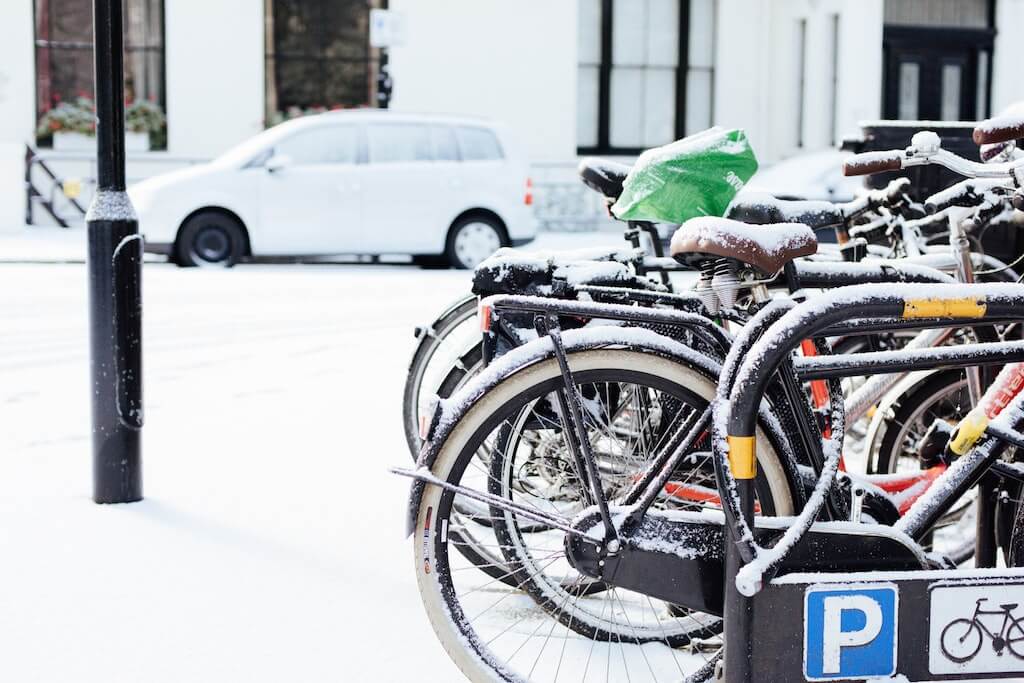Autumn Gear Guide
Find inspiration in our Gear Guide that will keep you out on your bike through wind or rain.
Download NowDo e-bikes and winter mix? Here are some tips for those with e-bikes looking to commute on the daily throughout winter. In northern climes, cycling throughout winter is the norm, especially in certain hardy cities such as Montreal, Quebec. No, there aren’t the same numbers of commuters, but like in other bicycle meccas such as […]
Do e-bikes and winter mix? Here are some tips for those with e-bikes looking to commute on the daily throughout winter.

In northern climes, cycling throughout winter is the norm, especially in certain hardy cities such as Montreal, Quebec. No, there aren’t the same numbers of commuters, but like in other bicycle meccas such as Copenhagen, when the snow flies and the temperatures drop, the snow tires come out and life goes on. And, the numbers are only growing. Along with the growth in bicycle commuting comes growth in e-bikes. Winter weather comes with not only the typical cycling challenges but new ones that are often more difficult to overcome.
Those in serious winter weather locales are all-too-familiar with the variety of municipal aids such as salt and brine dumped onto city streets with reckless abandon to ensure a safe drive for all. Great. Except, where cyclists tend to flock, at the side of the road, ends up as a slushy salty stew of corrosion that can gum up the works for the two-wheeled set.
That means every cyclist needs to diligently and lovingly clean their bicycles and e-bikes early and often to prevent the accumulation of gunk and salt.
Letting it slide for even days could clog important parts and prevent regular operation.
Since we are talking winter, it is also important to wash up at the right time when it isn’t below freezing, ideally creating a little indoor bike wash in the garage, shed, or even basement. Use a touch of lubricant in your wash. Consider purchasing a product that is designed to remove the salt.
These issues are only compounded for e-bike owners who may have parked a small fortune into their cherished bicycles. Battery connections and really anything involved in the electric operation need to be kept clean and clear of anything that could corrode and impede performance.
E-bikes, actually all bicycles, should ideally be stored in a cool and dry place. But that’s not always possible. At minimum removable e-bike batteries should be stored indoors, partially charged, and kept flat.
Take care when removing or attaching the battery, and make sure the battery, terminals, and bicycle are dry when reconnecting. Make sure the battery is warm when reattaching.
Electric bike batteries, like some human creatures, are very sensitive to temperature variations. On cold days, the battery range will drop substantially. Performance could be poor. One might suspect that the more expensive the bike, the better the battery will work in all conditions but that’s not always the case. We’ve tested quite expensive e-bikes in cold weather that lasted less than an hour on a gusty ride around the neighbourhood.
It’s good to get to know the battery life and performance in cold weather by testing it out, especially if the intent is to commute to work in cold weather with an e-bike. And if that is the case, there are several other steps to take to ensure continued performance.
For instance, get a snuggly to keep your battery warm and protected during winter weather, an example of which can be found here.
Prepare to charge your battery far more often than during the summer. Charge it indoors not outside.
A traditional bicycle can push through all manner of winter weather. Often, cyclists have a second older yes crappier bike to use during the winter. A beater bike is a wonderful investment. If possible, it would be good if those with e-bikes have the same.
Here’s a guide to buying a used bicycle.
Although e-bikes are amazing, and can revolutionize city life for the better, when it gets to -20 Celsius or worse, which is often the case in January and February in some Canadian and American cities, the option to leave the e-bike at home is a good one. And, it’ll be okay. Work from home.
E-bike batteries vary, but a rule of thumb is that anything below -20 Celsius is too cold for an e-bike to operate properly, and anything below -15 Celsius is too cold for storage. These temperatures will severely impact battery range and performance.
If intent on a winter e-bike experience during the winter, be sure to wear appropriate gear, both for rider and bike, from cycling mitts to winter tires.
To find more information check here and here.
Stay warm out there.
Find inspiration in our Gear Guide that will keep you out on your bike through wind or rain.
Download Now
Leave a comment